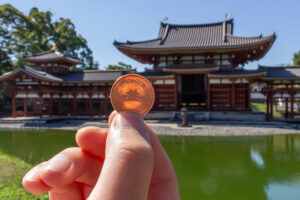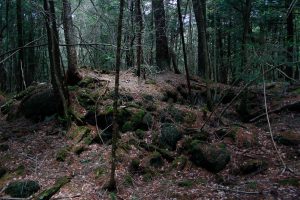At the foot of Mount Wakakusa sits one of the oldest parks in Japan. Sprawling across 660 ha (1631 ac), Nara Park is home to temples, shrines, and a national museum. But it’s best known for its thousands of wild sika deer, which freely roam the grounds. And because they’re used to humans, visitors can get up close.
After spending the morning at the Nara Kingyo and Ikimono museums, Kyohei and I took a bus from the mall down to the Park. It was a miserable spring day—the wind was cold and the rain stop-starting—but the deer were unperturbed. There they sat, in their droves, like the regal creatures they are.
A good portion of Nara Park is made up of Kasuga Taisha Shrine, in which the deity Takemi Kajichi no Mikoto is enshrined. As legend has it, he rode down to Nara upon a sacred deer from Kashima Shrine in Ibaraki. Because of this lore, the deer in Nara are considered sacred and have been protected for over 1,000 years. In fact, they’re now known to possess a unique genotype thanks to the preservation. They’re designated a national monument of Japan and hurting them is punishable by law.

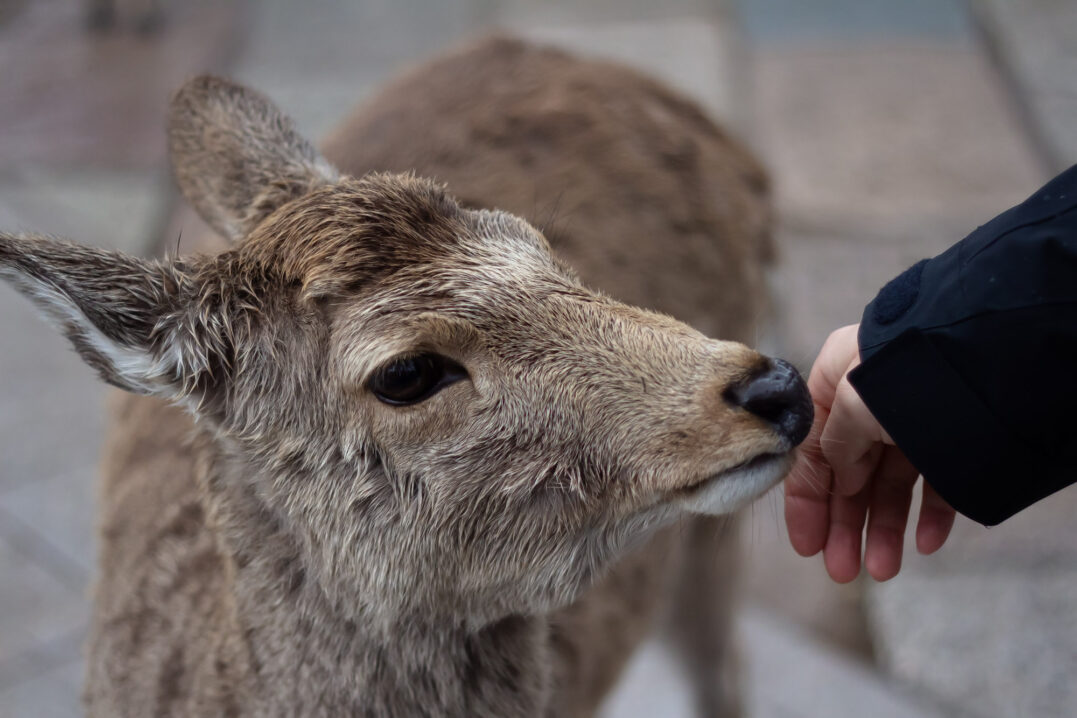
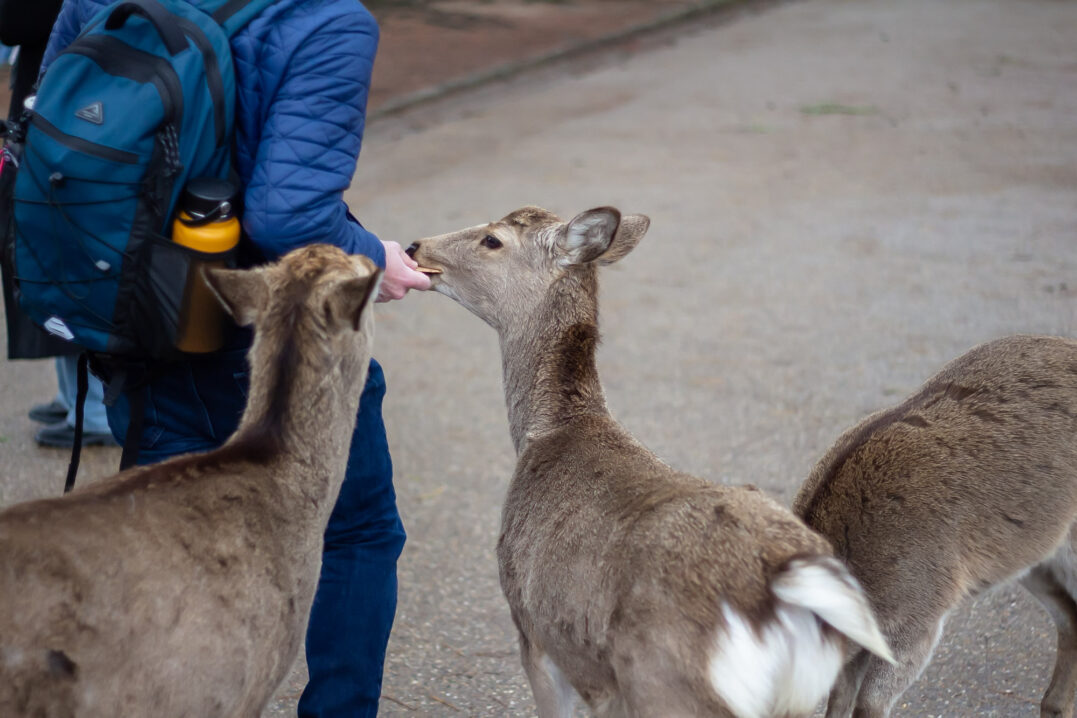
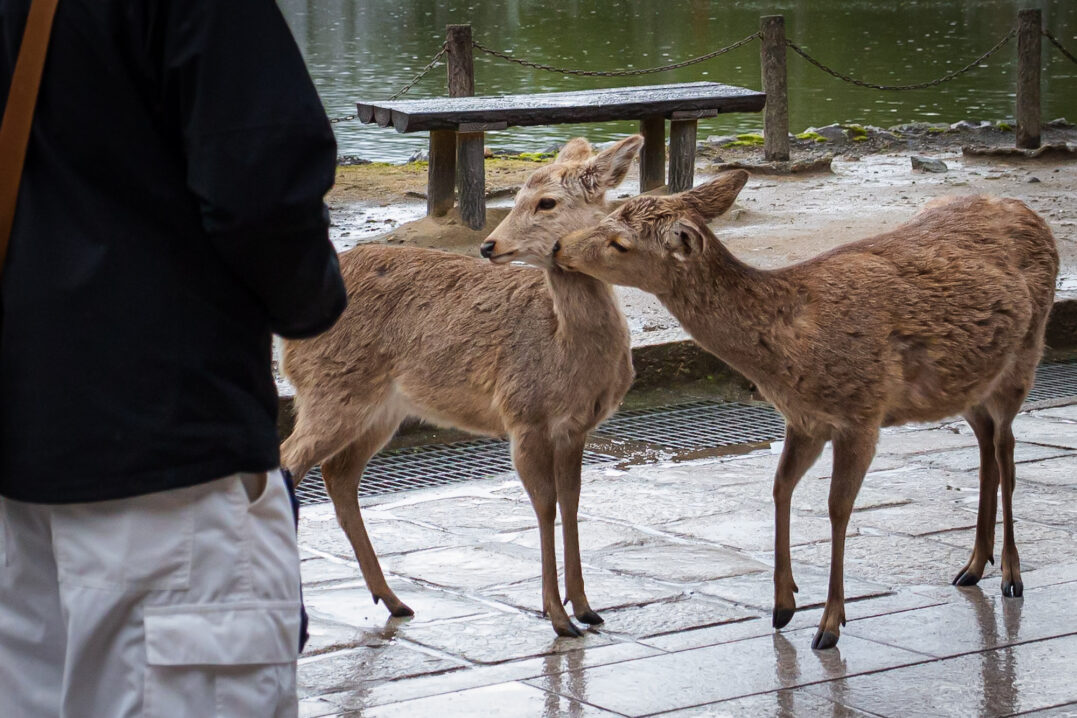

Nara deer have lived in close proximity to humans for decades, so they are pretty tame for wild animals. Most are friendly and curious, some even aggressively so, and many have learned how to bow in greeting. And, unlike the deer on Miyajima, they’re allowed to be fed by visitors—but only the special crackers that are sold around the park.
Shika senbei are made from wheat flour and rice bran and supplement the deers’ diets, which consist mainly of grass. The crackers are produced by the Nara Deer Protection Society and proceeds from the sales go towards supporting their efforts. They come in packs of 10 and cost 150円 per pack.
Feeding the deer in Nara Park is an experience you won’t soon forget. There’s nothing quite like being surrounded by half a dozen wild animals eating directly out of your hand. Be prepared for some friendly nips, though, and a few curious pokes around your pockets and bags. When you run out of crackers, open your palms to the deer. This will signal to them that you have no more food to give.
While arguably the best attraction, the deer aren’t Nara Park’s only. We also visited the nearby Todai-ji Temple, which is one of Japan’s Seven Great. The Great Buddha Hall is particularly significant as it houses the world’s largest bronze statue of the Buddha Vairocana, or in Japanese, Daibatsu.


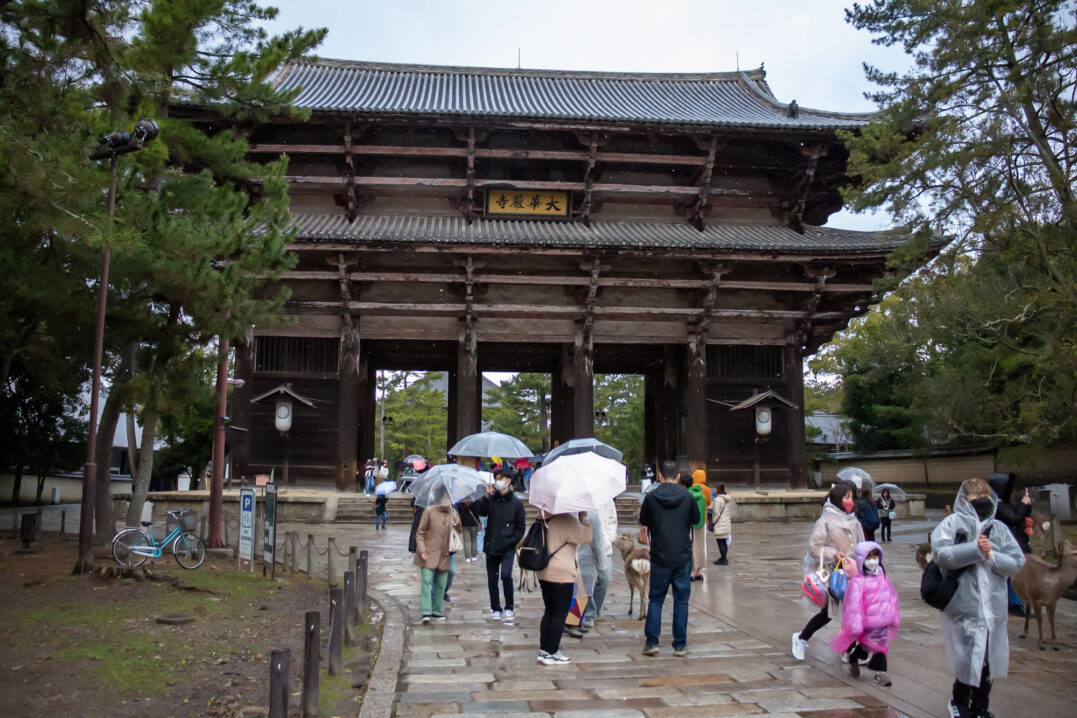
After we left the temple, it suddenly began to snow. That’s one of the great and unfortunate things about Japan—the weather is a box of chocolates. We ducked into a small cafe for a break and caught up over cake and coffee.
Then it was time for a bit of souvenir shopping. I highly recommend the washi tape with little deer butts on it. If you don’t find what you’re looking for in the shops around the temples, though, you can head to the nearby Higashimuki Street. The shopping arcade is full of shops, restaurants, and cafes.
Nara is only about an hour away from Osaka and Kyoto, making it a convenient day trip from either city. And it’s totally worth the visit, even just to see the deer. I’ll definitely be back one day to explore more of the park (hopefully in better weather) and say hi again to my new four-legged friends.



Visit Nara Park
Nara Park is an 8-min walk from Kintetsu Nara Station (近鉄奈良駅) on the Kintetsu-Nara Line and a 20-min walk from JR Nara Station (奈良駅) on the Nara Line.
Hours: 24/7
Admission: Free

